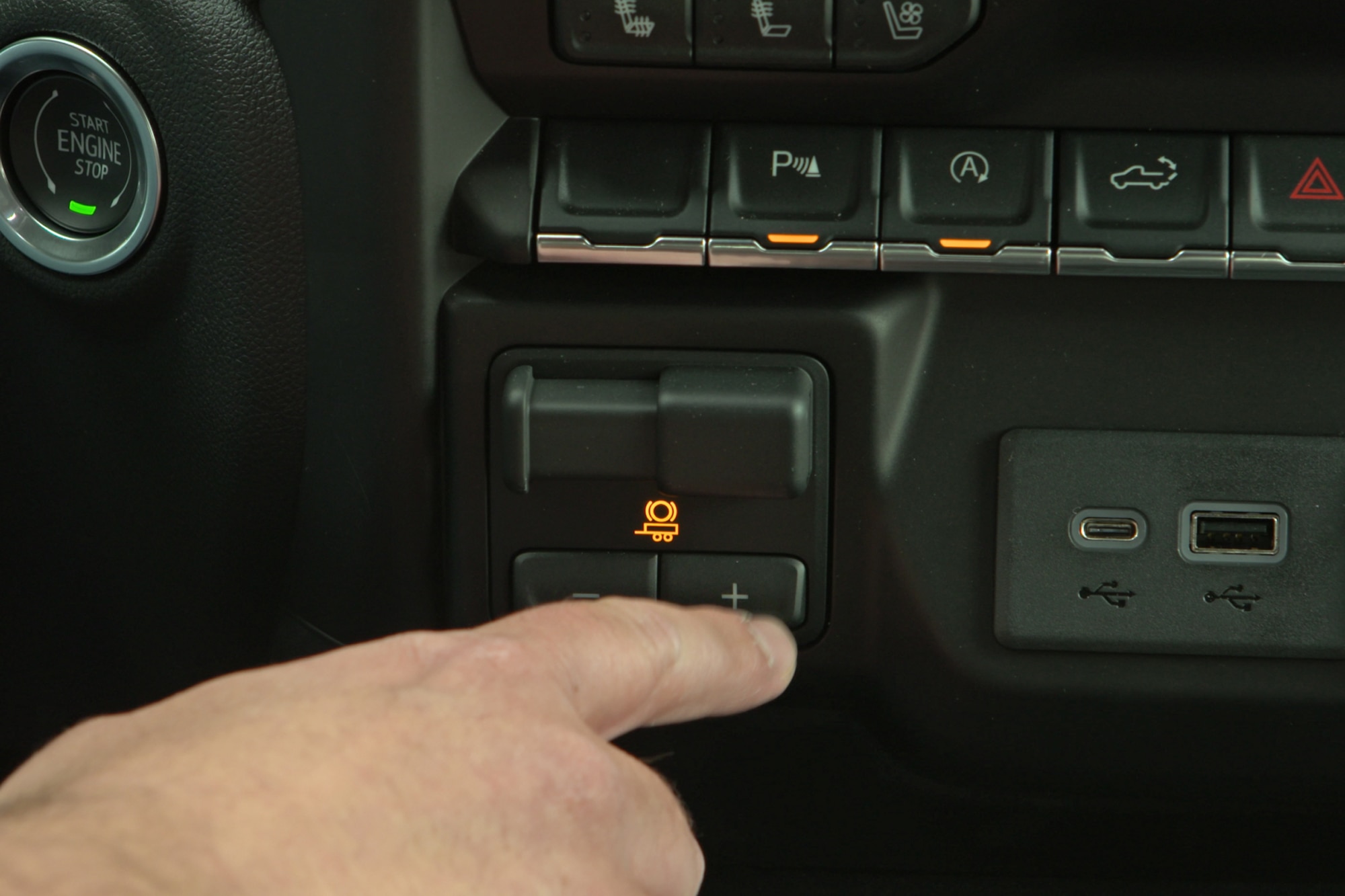What are Trailer Brake Controllers and How Do They Work?
This is necessary equipment to tow heavy loads.
 Chevrolet
Chevrolet
As its name suggests, a trailer brake controller controls trailer brakes. It does this by sending a signal to the trailer's brakes to activate them when the tow vehicle is braking.
How Does a Trailer Brake Controller Do Its Job?
There are two main categories of electronic brake controllers: proportional and time-delayed. Both monitor the brake inputs on the tow vehicle and send their commands on to the trailer. Where they differ is in how they respond to those brake inputs.
Time-delayed controllers are the more established (read: old tech) of the two options. The driver selects a level of brake force on the device, and that's the amount of braking you’ll get regardless of whether the tow vehicle is coming to a slow stop or slamming on the brakes. As you might imagine, this can cause jerky stops and some push-pull between the trailer and tow vehicle. The driver can change the brake force on the fly and throughout the drive.
Proportional controllers, on the other hand, react proportionally (more truth in advertising), meaning there's a direct, linear relationship between what the tow vehicle's brakes are doing and what the trailer's are told to do. These newer devices use accelerometers to sense the tow vehicle's deceleration to determine the appropriate brake force to request.
Do I Need a Trailer Brake Controller?
You'll need one of these devices if the trailer you're towing is equipped with electric or electro hydraulic brakes. Otherwise, there's nothing telling the trailer's brakes when to operate. The federal law that regulates commercial vehicles states, trailers with a loaded weight over 3,000 lbs. require brakes.
What are My Trailer Brake Controller Options?
Proportional controllers are generally preferred over their time-delayed counterparts; they're a little more complicated and thus a little pricier, but the difference is worth it for improved brake response that translates likely to a safer towing experience.
As for how they connect to your tow vehicle, you have a few choices. The cleanest and easiest option is to buy a vehicle with a factory-installed controller. Modern full-size pickups and many large SUVs offer them, with controls usually integrated into the dash.
On the aftermarket side, under-dash units are the most common. They require some wiring to install. This can be relatively simple if the vehicle is pre-wired for this purpose, or it can be a bit of a project if you have to make up all of the connections yourself. Have a professional do the install if you're not confident in your electrical skills. Brakes are important.
You can also find more flexible devices that allow you to mount the main controller somewhere out of sight (and out of the way of your knees) and control the trailer brakes via an accessory remote knob, which you can place where you like. Installation is slightly more involved than an under-dash model because you have to run another wire for the control knob.
Last but not least are some new wireless options. They install into the vehicle's seven-pin trailer connector, and the trailer's cable plugs into the controller. The driver can make system adjustments through a wireless remote or by using a smartphone connected over Bluetooth. Besides not requiring any wiring, this design makes it very easy to move the device between vehicles.
Written by humans.
Edited by humans.
 David Gluckman
David GluckmanDavid Gluckman has over a decade of experience as a writer and editor for print and digital automotive publications. He can parallel park a school bus, has a spreadsheet listing every vehicle he’s ever tested, and once drove a Lincoln Town Car 63 mph in reverse. When David’s not searching for the perfect used car, you can find him sampling the latest gimmicky foodstuffs that America has to offer.
Related articles
View more related articles